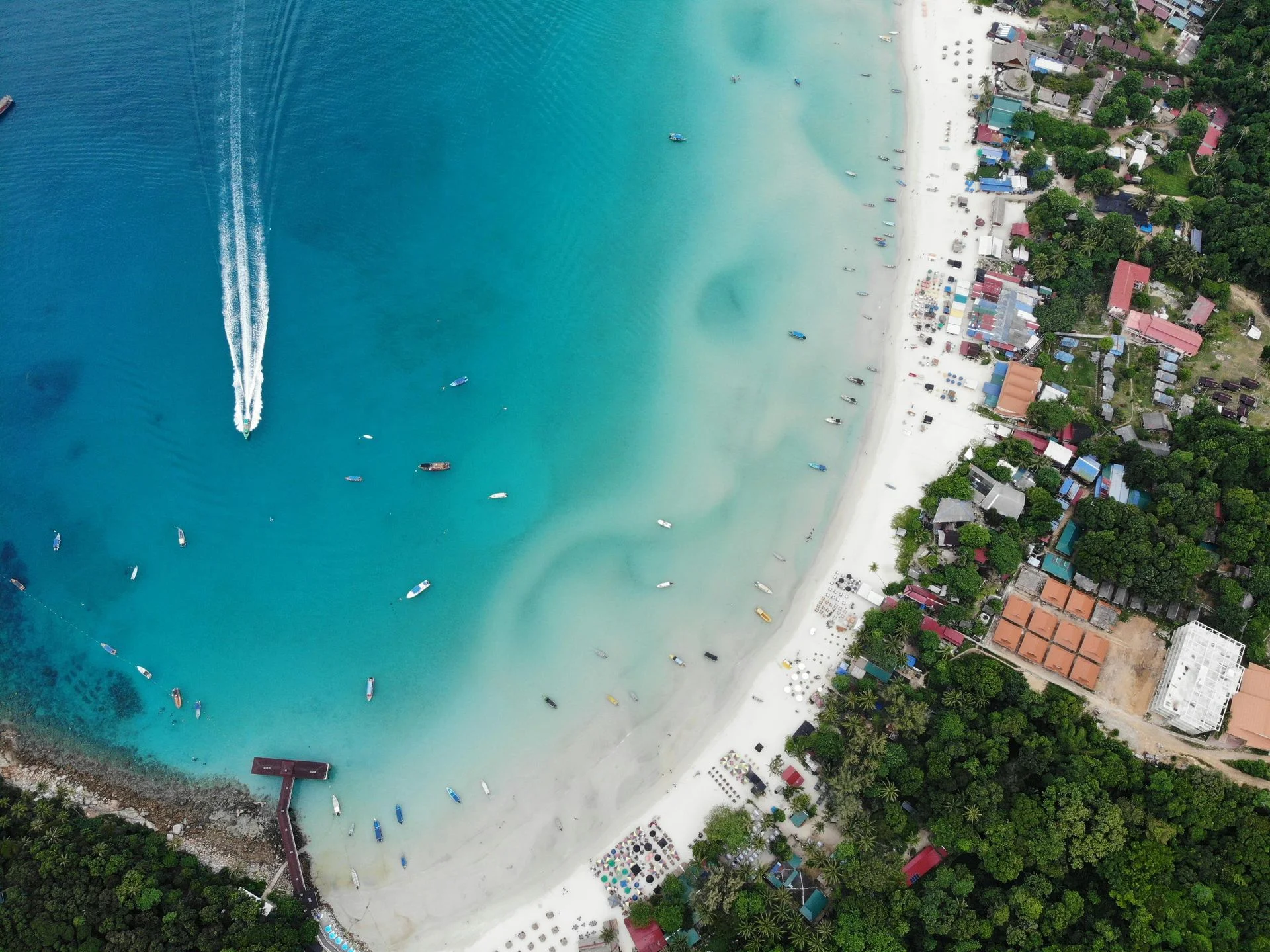Scuba Diving in Perhentian Islands
The Ultimate Guide
The Perhentian Islands consist of two lush, jungle‑clad islands—Pulau Perhentian Besar (Big Island) and Pulau Perhentian Kecil (Small Island)—located about 20 kilometres off Malaysia’s north‑east coast. Known for their powder‑white beaches and turquoise water, they offer relaxed, beginner‑friendly diving on shallow reefs, pinnacles and wrecks. Visibility is respectable, water is bathtub‑warm and currents are generally mild, making the archipelago a perfect spot to learn to dive or simply enjoy colourful coral gardens teeming with reef fish. Sea turtles nest on the beaches, blacktip reef sharks patrol the edges and a handful of wrecks provide a refuge for schooling fish and critters.
Difficulty
Easy
Temperature
28-30°C
Visibility
10-20m

Diving Highlights
Best Months to Dive
Getting to Perhentian Islands for Diving
✈️Transportation
There is no airport on the Perhentian Islands.
Most travellers take a bus or drive to the port town of Kuala Besut on the mainland. Buses from Kuala Lumpur’s TBS terminal and other Malaysian cities arrive at Kuala Besut early in the morning.
From Kuala Besut Jetty speedboats depart every hour during the season and take around 40 minutes to reach Perhentian Kecil or Perhentian Besar.
Travellers flying into Kota Bharu or Kuala Terengganu can hire a taxi to Kuala Besut (about 1–2 hours) before transferring to the boat.
Country
Malaysia
Currency
Malaysian Ringgit
Electricity
240V, 50Hz, UK plug
Cost of a Dive Trip in Perhentian Islands
Day Trip
Dive Resort
Meal
Accommodation
Best Dive Sites in Perhentian Islands
🐠Tokong Laut (Temple of the Sea)
A granite pinnacle rising from 19 m to within 5 m of the surface. The site is cloaked in anemones and soft corals and swarms with reef fish—giant pufferfish, trevally, bamboo sharks, moray eels and endless schools of snapper and fusilier. Look closely for nudibranchs, boxfish and squid among the crevices.
🐢Terumbu Tiga (T3)
Known as “Three Brothers”, this site comprises three large boulders with tunnels and swim‑throughs. Colourful soft corals, gorgonians and rubble patches create habitat for macro critters while pelagics like barracuda and reef and bamboo sharks patrol the blue. It’s a favourite for both wide‑angle and macro photography.
🦈Tanjung Betong
A shallow boulder reef on the north of Perhentian Kecil with excellent coral cover and a good chance of spotting pelagics such as barracuda and blue‑fin trevally. Beware the aptly named Trigger Alley where dozens of titan triggerfish guard their nests during breeding season.
🐙Sugar Wreck (MV Union Star 17)
A 90 m cargo ship that sank in 2000 now lies on its side in 18 m of water. The wreck is encrusted with coral and sponges and teems with cobia, coral catsharks, scorpionfish, lionfish, puffers and schooling barracuda and snapper. Penetration is possible for experienced divers.
🐚Vietnamese Wreck
A small wooden wreck resting at 24 m. Currents can sweep through, bringing nutrient‑rich water and rare critters such as seahorses, nudibranchs and the blue‑ring octopus. Spend time sifting through the rubble for macro life.
🦑Batu Layar (Sail Rock)
An isolated reef rising from 18 m to the surface where blacktip reef sharks and hawksbill turtles often cruise. The reef top is carpeted with table corals and surrounded by schools of snapper, batfish and barracuda. It’s a great site for both snorkelers and divers.
🐡Shark Point
A gently sloping reef with scattered boulders where blacktip reef sharks are frequently seen hunting. You might also encounter barracuda, batfish and turtles while exploring the nooks between the rocks. Currents are mild and it’s suitable for all levels.
What Divers Say About Diving in Perhentian Islands
Alex Thompson
Marine Biologis / DivemasterPerhentian diving is as laid‑back as island life gets. Days start with a short boat ride over glassy water to a nearby reef where you back‑roll in to find schools of snappers, fusiliers and the occasional blacktip cruising by. Beginners love the warm water and easy depths—there’s hardly ever a current and many dive sites sit between 5 and 20 metres. Macro fans will enjoy hunting for nudibranchs and boxfish among the sea fans, while wreck enthusiasts can explore the Sugar Wreck, a cargo ship that has become a thriving artificial reef. Surface intervals are spent on palm‑fringed beaches or snorkelling with green turtles. Evenings mean fresh seafood barbecues and sunset walks on powdery sand; life here moves at a slower, happier pace.
Frequently Asked Questions About Diving in Perhentian Islands
When is the best time to dive the Perhentians?
The islands are open for diving from April to October when the seas are calm and visibility is good. From November through March monsoon winds make crossings dangerous and most resorts close.
What marine life can I see?
Expect plentiful reef fish such as parrotfish, butterflyfish and angelfish; green and hawksbill turtles; bamboo and blacktip reef sharks; cuttlefish; squid; shrimps; nudibranchs and, at some sites, schooling barracuda and trevally.
Are the Perhentians good for beginners?
Yes. Most sites are shallow with mild currents and good visibility, making them ideal for Open Water courses and easy fun dives. More experienced divers will enjoy deeper pinnacles and wrecks.
How many dive sites are there?
There are more than twenty dive sites around the two islands, including pinnacles, coral gardens and wrecks such as Sugar Wreck and Vietnamese Wreck.
What are the water temperature and visibility like?
Water temperature stays around 28–30 °C and visibility ranges from 10–20 m year‑round.
How do I get there?
Take a bus or drive to Kuala Besut on the mainland; from there speedboats run throughout the day to Perhentian Besar and Kecil. If arriving by air, fly to Kota Bharu or Kuala Terengganu and transfer by taxi to the jetty.